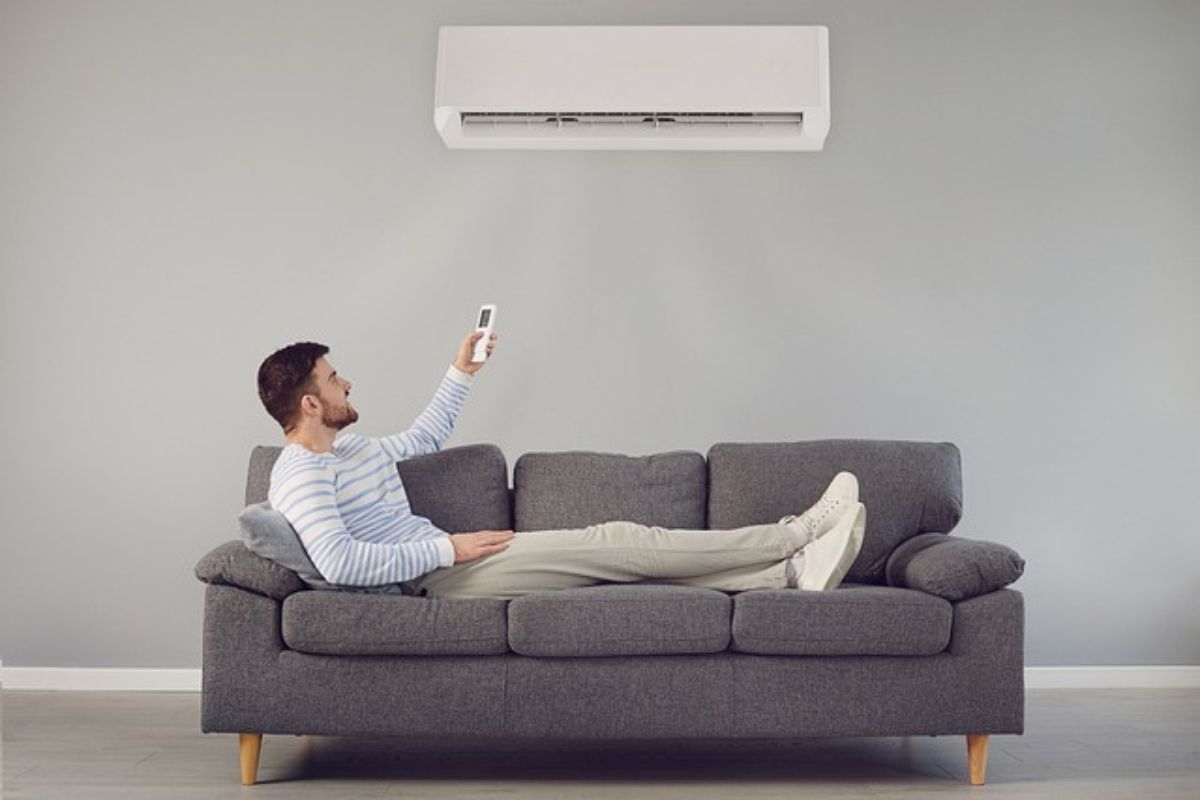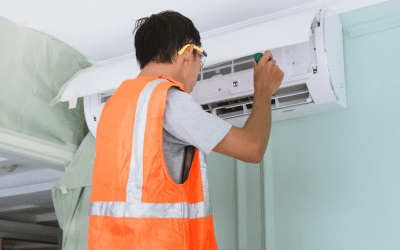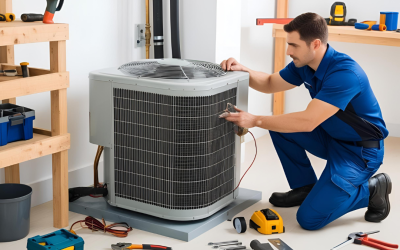With the increasing real estate costs, home sizes are getting smaller day-by-day. In such a scenario, unlike traditional air conditioning systems that take up a lot of space, mini split air conditioners are the smart way to keep homeowners comfortable while saving space.
Traditional air conditioning systems usually rely on extensive ductwork to distribute air. But mini split air conditioners operate without the need for ducts, making installation easier and more flexible. This is why they are also referred to as “ductless air conditioners” or “ductless AC”. Curious about knowing more about how mini split air conditioners function and why they are becoming popular among people? Below, we will deeply explain each of its aspects to resolve all concerns that might be striking your mind right now.
Scroll down the information till the end for a better & deeper understanding!
Understanding Traditional Air Conditioning Systems
These systems typically rely on a network of ducts to distribute cooled air uniformly throughout a building. Traditional air conditioning systems comprise an outdoor unit that houses the compressor and condenser, connected to an indoor unit (evaporator coil) via ductwork. The indoor unit, on the other hand, is located in a central area, such as a utility closet or attic, and is connected to vents or registers in each room.
The working of the traditional air conditioner begins with the outdoor unit compressing and cooling the refrigerant gas, which then flows to the indoor unit through copper tubing. By absorbing heat from warm indoor air, the refrigerant causes it to cool and dehumidify. The cooled air is then pushed back into the rooms through the ductwork, while the warm air returns to the indoor unit to be cooled again.
Is Any Major Concern Associated With This?
- Traditional systems require careful sizing and balancing of ductwork to ensure even cooling throughout the building.
- The cost of installation is higher, especially in buildings without existing ductwork. They may also experience energy losses through duct leaks, reducing overall efficiency.
Alternative systems like mini split air conditioners offer many homeowners and businesses a more flexible and energy-efficient cooling solution.
Understanding Mini-split Air Conditioning & Its Components
Mini-split air conditioning systems, also known as split-system air conditioners or mini-splits, connect individual room units to an outdoor compressor. Inside each unit, there are evaporator coils cooled by a refrigerant. The coils absorb heat from the room’s warm air, and the refrigerant then carries this heat to the outdoor unit.
Unlike central AC systems with long ductwork, mini-splits have small units in each room that take in warm air and release it as cool air. This alternative to traditional ACs requires less invasive installation, integrates better with rooms, operates quietly, and is highly energy-efficient. Let’s briefly discuss the components of mini-split AC for a more detailed understanding!
Component of mini split air conditioners
1. Outdoor Condenser Unit
This unit comes with three parts of the conditioning system:
a) Compressor
Its primary function is to pressurize and circulate the refrigerant throughout the system. As the refrigerant flows through the compressor, it undergoes compression, increasing its temperature and pressure.
b) Condenser Coil
Located within the outdoor condenser unit, this coil ensures the transfer of heat from inside the building to the outdoor surroundings.
c) Fan
Blows outdoor air over the condenser coil, facilitating heat transfer and expelling heat into the surrounding environment.
2. Refrigerant Lines
These lines connect the outdoor condenser unit to the indoor air handling units. They carry the refrigerant, which absorbs heat from the indoor air and transports it to the outdoor unit for dissipation.
3. Indoor Air Handling Units (Evaporator Units)
Each indoor air handling unit is installed in the room or zone designed to cool. This portion is divided into two further subcategories:
a) Evaporator Coil
Available in each indoor unit, the evaporator coil serves as the site where the refrigerant absorbs heat from the indoor air.
b) Blower Fan
It is responsible for circulating air over the evaporator coil and throughout the indoor space. As the coil absorbs heat from the air, the blower fan blows the cooled air back into the room, ensuring even distribution of the conditioned air.
4. Refrigerant Tubing
It connects the indoor and outdoor units, allowing the refrigerant to flow between them.
5. Drainage System
Condensate drains remove excess moisture collected by the evaporator coil and route it outside or to a drainage system.
6. Thermostat or Remote Control
The thermostat or remote control allows users to set the desired temperature, fan speed, and operating mode (cooling, heating, dehumidification, etc.). Some systems feature smart thermostats or mobile apps for remote control and scheduling.
How mini split systems Achieve Zoning?
Mini-split air conditioners create different temperature zones by connecting several indoor units to one outdoor unit. Controlling each indoor unit separately allows you to have different temperatures in different rooms.
For example, in a house with three bedrooms and a living room. Instead of having one central air conditioner for the entire house, a mini-split system can be installed with three indoor units (one in each bedroom) connected to one outdoor unit. Each bedroom can have its own temperature setting, allowing one person to sleep comfortably at a cooler temperature while another prefers a slightly warmer room. Meanwhile, the living room can have a separate setting for daytime comfort.
Advantages of mini split air conditioners
These HVAC systems offer an array of benefits to your space besides taking up a small space in your home. Let’s discuss them all!
1. More Energy Efficiency Than Standard AC units
With individual zone control, mini-split systems only cool the rooms that are in use, reducing energy waste. This targeted cooling approach helps in saving electricity bills which are really a peace of mind in these days.
2. Zoned Cooling
By offering customizable temperature settings for each room or zone, mini-split systems provide enhanced comfort tailored to individual preferences. Occupants can adjust temperatures according to specific needs, ensuring optimal comfort levels throughout the day and night, regardless of outdoor weather conditions.
3. Quiet Operation
Since the noisy components like the compressor are located outside, indoor units produce minimal sound, making them ideal for areas where quietness is preferred.
4. Simple Installation And Less Maintenance
In mini split air conditioners, the installation process is less tricky & time-consuming compared to the traditional systems. So, these units automatically save time and hassle since they don’t require ductwork.
Even mini-split air conditioners have accessible filters that can be easily removed, cleaned, or replaced. This simple maintenance task helps ensure efficient operation and prolongs the system’s lifespan.
5. Improved Air Quality
Without ducts to collect dust, allergens, and debris, mini split systems promote better indoor air quality. The units feature filters that capture airborne particles, preventing them from circulating throughout the home.
Conclusion
Choosing mini split air conditioning is a smart move towards sustainability. By cutting energy waste and greenhouse gas emissions, mini split systems can help protect the environment.
If you are planning to invest in a mini-split AC system and need guidance in choosing the right options or need the best air conditioner repair in New Braunfels, feel free to contact, “Classic Air Conditioning & Heating!!






